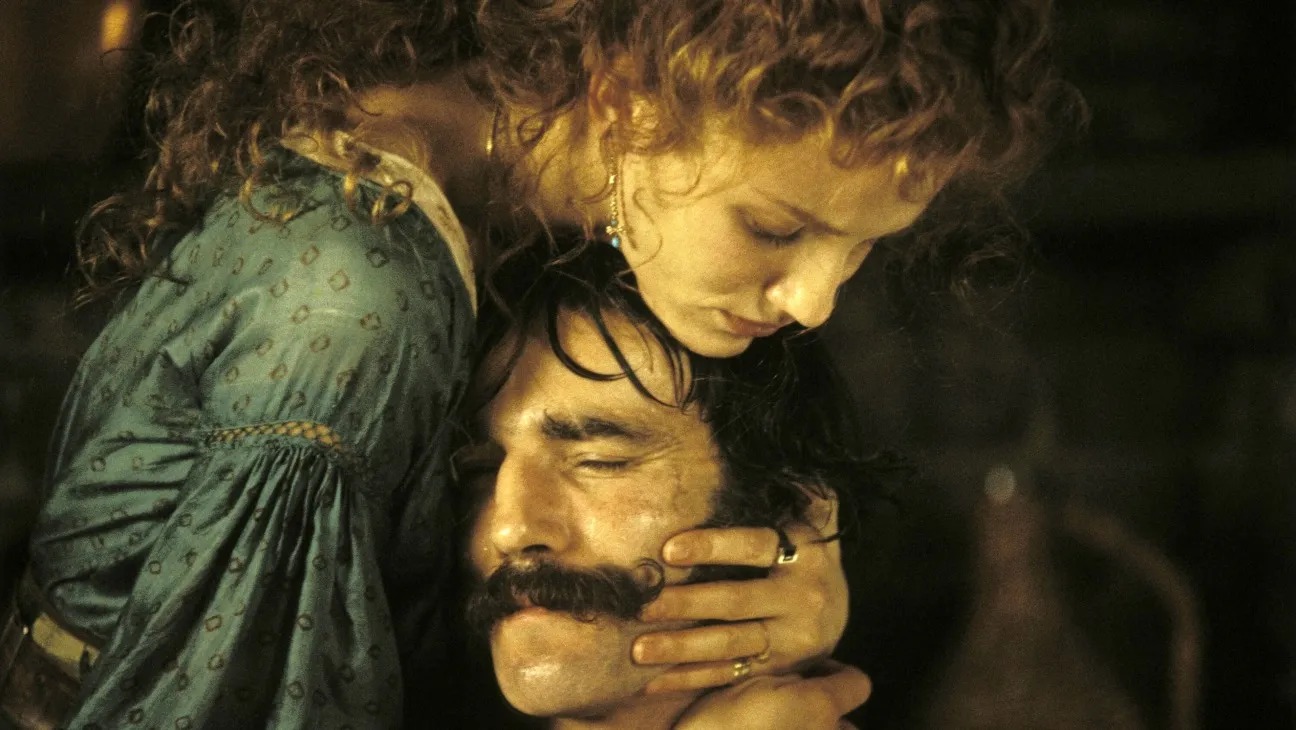Gangs of New York (2002)

Martin Scorsese’s Gangs of New York (2002) is a sprawling historical epic that vividly reconstructs the tumultuous period of New York City in the mid-19th century. Set against the backdrop of political corruption, class struggle, and gang warfare, the film offers a rich tapestry of historical and personal conflict, blending Scorsese’s trademark storytelling with a meticulous attention to period detail. The film’s exploration of themes such as vengeance, identity, and the quest for redemption is woven into a narrative that reflects the social and political upheavals of the time.
Gangs of New York is set in the years leading up to and including the American Civil War, focusing on the Five Points neighborhood of New York City, which was infamous for its poverty, crime, and corruption. The film follows the story of Amsterdam Vallon, played by Leonardo DiCaprio, who returns to the Five Points seeking revenge against Bill the Butcher Cutting, portrayed by Daniel Day-Lewis. Bill, a powerful gang leader, had killed Amsterdam’s father, Priest Vallon (Liam Neeson), in a brutal confrontation years earlier.
The film’s plot is driven by Amsterdam’s quest for revenge, but it also delves into the broader social and political landscape of the time. The tension between the nativist gangs and the immigrant communities, the impact of the Civil War, and the political machinations that shaped the era are all integral to the story. The narrative intricately intertwines personal vendettas with historical events, providing a multifaceted view of a city and a period in flux.

The film boasts an ensemble cast, each of whom brings depth and complexity to their roles. Daniel Day-Lewis’s portrayal of Bill the Butcher Cutting is particularly noteworthy. Bill is a charismatic yet brutal antagonist whose personal code of honor is marked by violence and prejudice. Day-Lewis delivers a performance of extraordinary intensity, capturing the character’s larger-than-life presence and ruthless determination. Bill’s blend of charm and menace makes him a formidable and memorable villain, embodying the chaos and brutality of the time.
Leonardo DiCaprio’s portrayal of Amsterdam Vallon is equally compelling. Amsterdam’s journey from a vengeful son to a leader seeking justice is portrayed with nuance and emotional depth. DiCaprio captures Amsterdam’s internal conflict and growth, making him a relatable and sympathetic protagonist. The character’s evolution throughout the film mirrors the broader struggles and transformations occurring in New York City.
Cameron Diaz’s role as Jenny Everdeane adds another layer to the narrative. Jenny is a complex character, caught between her past as a thief and her attempts to forge a new identity. Diaz’s performance conveys Jenny’s strength and vulnerability, highlighting her internal struggle and the impact of her choices on the central conflict. Her relationship with Amsterdam is fraught with tension and ambiguity, adding emotional depth to the story.
Gangs of New York explores several profound themes, including revenge, identity, and the struggle for power. The film’s depiction of Amsterdam’s quest for vengeance is not merely a personal journey but also a commentary on the cyclical nature of violence and the difficulty of breaking free from a legacy of conflict. Amsterdam’s struggle to reconcile his desire for revenge with his burgeoning sense of responsibility and leadership reflects the broader struggle for redemption and change.
The film also examines the theme of identity, both personal and collective. The diverse and often chaotic environment of the Five Points serves as a microcosm for the broader American experience of the time. The conflict between the nativist gangs and the immigrant communities underscores issues of race, ethnicity, and class, reflecting the tensions and prejudices that shaped American society.
Another significant theme is the quest for power and control. The film portrays the struggle for dominance among various factions in New York City, highlighting the impact of political corruption and social upheaval on individuals and communities. The power struggles depicted in the film serve as a reflection of the broader political and social conflicts of the era.

The cinematography of Gangs of New York, led by Rodrigo Prieto, is a crucial element in creating the film’s immersive atmosphere. The film’s depiction of 19th-century New York City is both detailed and evocative, capturing the grime and grandeur of the period. The use of lighting, set design, and color palette contributes to the film’s gritty and authentic portrayal of the era.
The film’s battle and street scenes are particularly striking, with their choreography and staging reflecting the chaos and violence of the time. The depiction of the infamous Draft Riots, a pivotal event in the film, is a powerful and harrowing sequence that encapsulates the film’s exploration of social unrest and conflict.
The film’s score, composed by Howard Shore, plays a significant role in enhancing the emotional and dramatic impact of the narrative. Shore’s music blends traditional orchestral elements with period-appropriate motifs, creating a soundtrack that complements the film’s historical setting while adding depth to its emotional and dramatic moments. The score’s ability to evoke the film’s themes and atmosphere contributes to its overall effectiveness.
Gangs of New York received mixed to positive reviews from critics, with particular praise directed at the performances of Daniel Day-Lewis and Leonardo DiCaprio, as well as the film’s ambitious scope and historical detail. The film’s depiction of the violent and turbulent nature of 19th-century New York City was recognized for its authenticity and impact. Despite its mixed reception, the film has since been regarded as an important work in Martin Scorsese’s filmography and a significant contribution to the genre of historical drama.
In conclusion, Gangs of New York is a richly layered and visually compelling film that offers a profound exploration of historical conflict, personal redemption, and societal upheaval. Through its powerful performances, meticulous period detail, and thematic depth, the film provides a vivid and engaging portrayal of a pivotal era in American history. Martin Scorsese’s direction, combined with a talented cast and evocative score, ensures that Gangs of New York remains a significant and influential work in the cinematic landscape.











